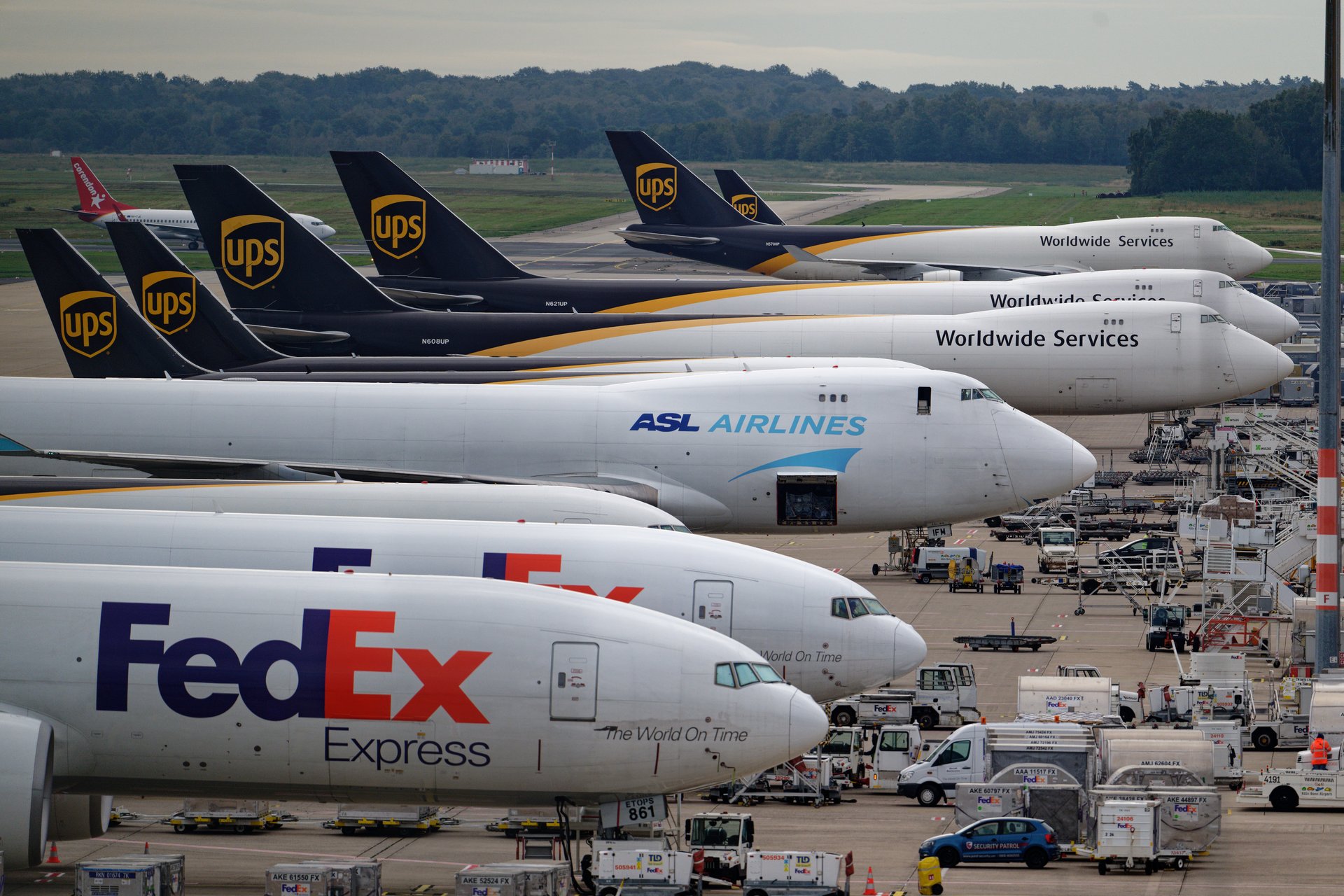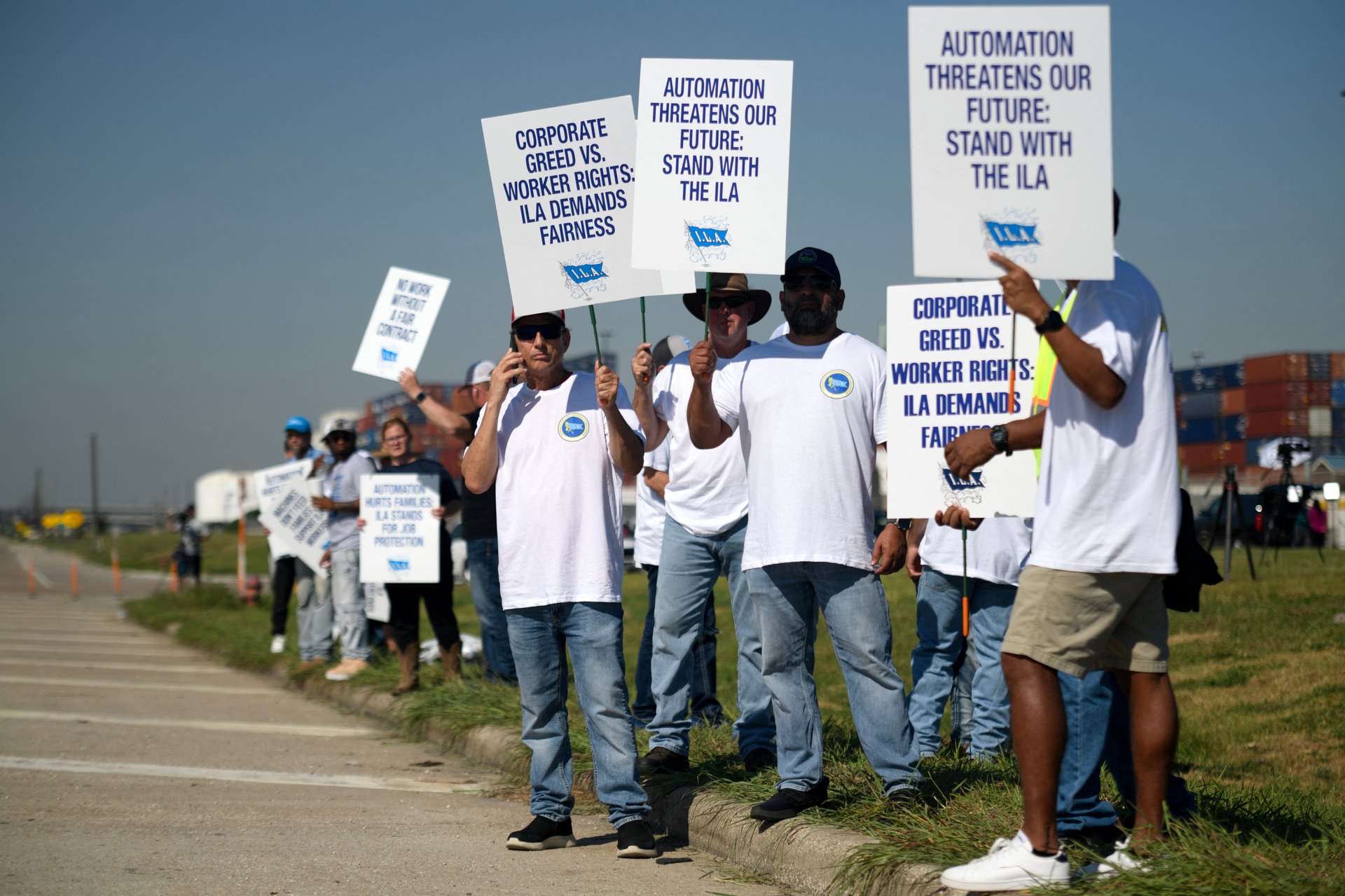FedEx and UPS stocks could fly in an extended port strike, analyst says
Shelby McFaddin of Motley Fool Asset Management breaks down the winners and losers of the U.S. port strike

Shelby McFaddin, an investment analyst at Motley Fool Asset Management, spoke with Quartz for the latest installment of our “Smart Investing” video series.
Watch the interview above and check out the transcript below, which has been lightly edited for length and clarity.
ANDY MILLS (AM): As of Oct. 1, workers at ports have gone on strike on the East Coast and the Gulf Coast. How long do you expect the strike to last?
SHELBY MCFADDIN (SM): I can’t put a specific number on it, but we know that sometimes wage negotiations can take a lot longer because they require some of the bigger concessions from the parties involved. Usually, management is not as interested in that because it’s gonna drop right to the bottom line. It’s really difficult to leverage your way out of wage increases, especially when they’re not going to be something as simple as: We’re going to give you 2% over this long period. My understanding is that there’s a great deal of interest in getting a lot of these increases right up front to deal with a lot of the difficulties from inflation. So I think it might take some extra time, but that could be a few extra days. It could be a few extra weeks.
AM: Yeah, I imagine companies would like to get things back on track as soon as possible. How prepared do you think they are for an extended strike?
SM: I would imagine companies that rely significantly on ocean freight have been working this into their plans. It’s difficult to completely hedge against these issues. You can go ahead and transfer some things to air freight, which is expensive. You can ship less per shipment — it costs quite a bit of money — but they can go ahead and do some rerouting there. So I imagine that there have been some precautions taken, but again, it’s really difficult, if not impossible, to do a 100% hedge with zero consequences to the bottom line, as well. The bill literally comes due.
AM: This is definitely going to have a big impact on a lot of companies. Who do you see as the winners and losers?
SM: I think, on one hand, some of the winners will still be in global freight. We have folks such as UPS (UPS) and FedEx (FDX), which potentially may be able to pick up some short-term contracts. We saw something similar when UPS was going through its own issues with Teamsters back in the spring where they lost a good amount of volume because some of their customers said, “You know what, this is a sure thing, we have a lot of faith in you, but we’ve seen what strikes can do.” So there’s a chance we may hear in some of these Q3 calls that certain companies have gone ahead and said, “You know what, we know we may have to raise prices somewhere. We know we may have some inventory issues, some supply chain issues, but we’re gonna make sure we get some of our product moved appropriately with air freight.” So that’s one option.
But companies that might struggle a little bit could be companies that are receiving finished goods and they’re waiting on them — or rather, even companies that are waiting for inputs. As we know, inventories have definitely been sold down over the last few years, and a lot of companies at this point kind of pride themselves on not keeping too much in inventory, so there’s not as much of a cushion as we’re used to.
If there’s not a lot of finished goods and they’re waiting on inputs, that could be an issue. So a lot of capital goods might be a little bit more expensive as we wait for that strike to finish up.

AM: Do you see companies having to raise prices because of this strike?
SM: I think it’s a little bit too early to say for sure that we’ll see a sort of broad increase. I do think that, depending on how long this goes, there’s an option for companies to raise prices — again, depending on inventories and depending on if it’s finished goods or inputs they’re waiting on. So I’m not quite willing to say that in this quarter we’re guaranteed to see stagnancy in inflation, but I will also say that I’m willing to bet the Fed’s going to be looking at it. That’s not in their mandate to adjust based on global events, however, they are going to keep a close eye on any sort of segments or verticals in the goods and services inflation, how that’s starting to move, and whether or not they can attribute that to what should be a transitory event.
So this shouldn’t be structural, this should be something that resolves itself — well, it will be something that resolves itself without the Fed’s intervention — so they’re less likely to consider it as a reason to go off course in any specific direction.
